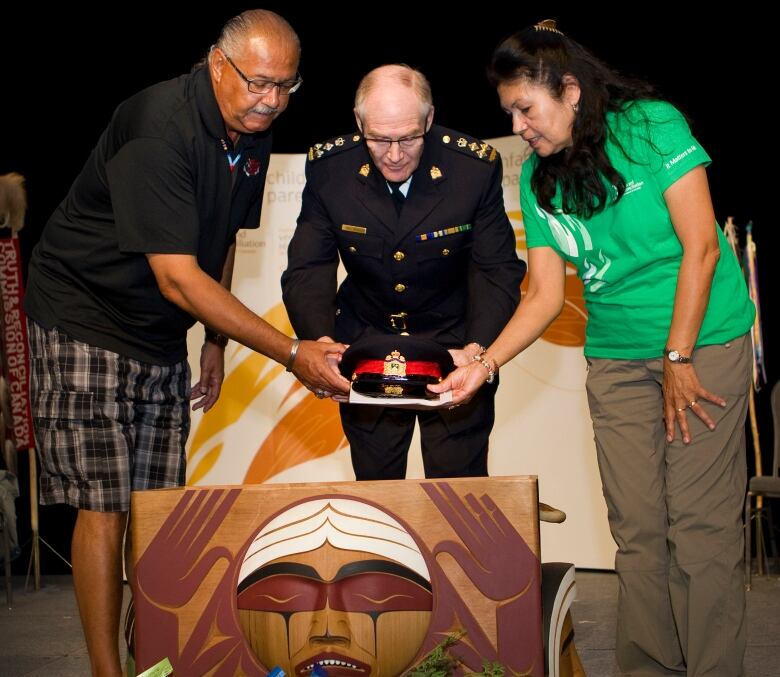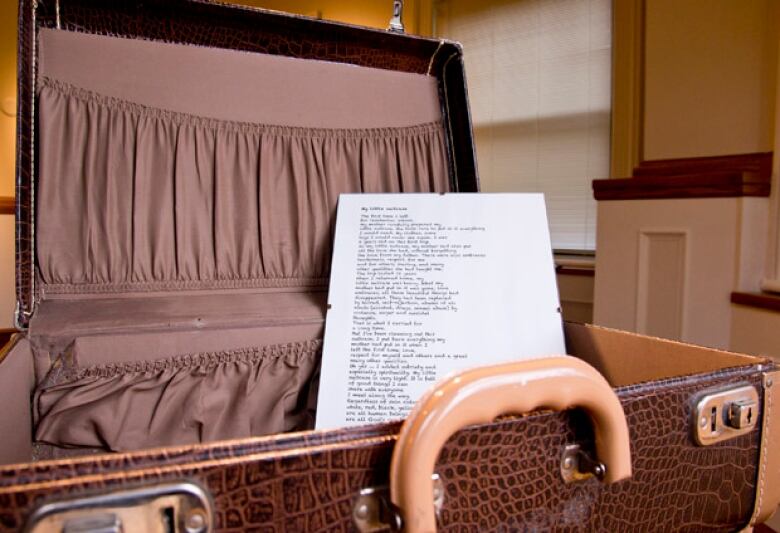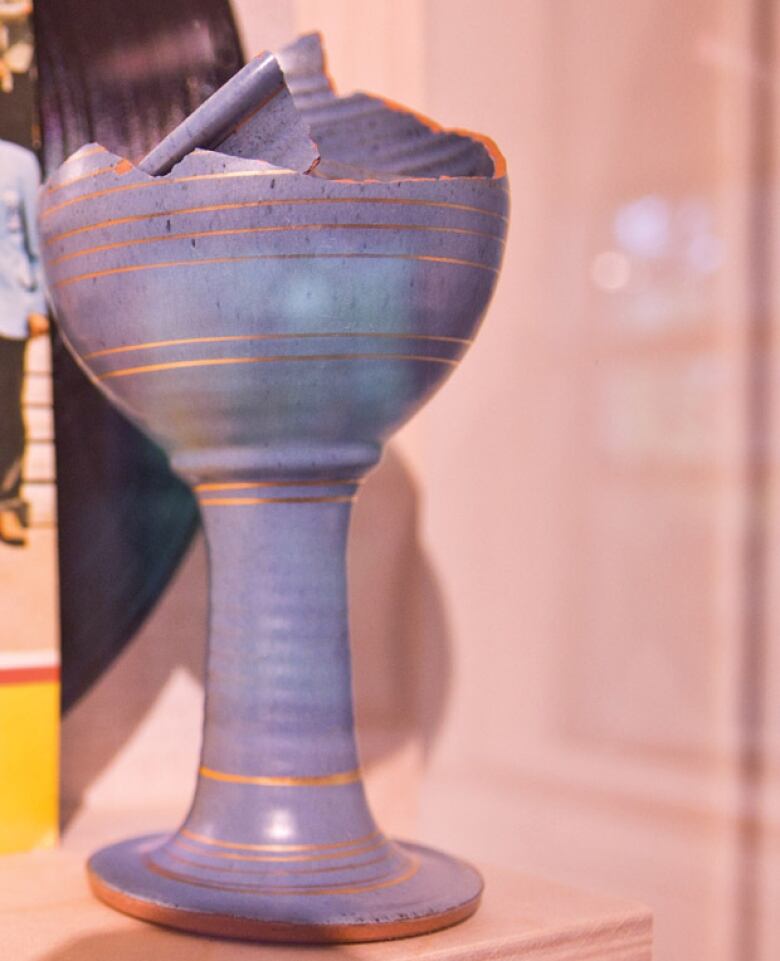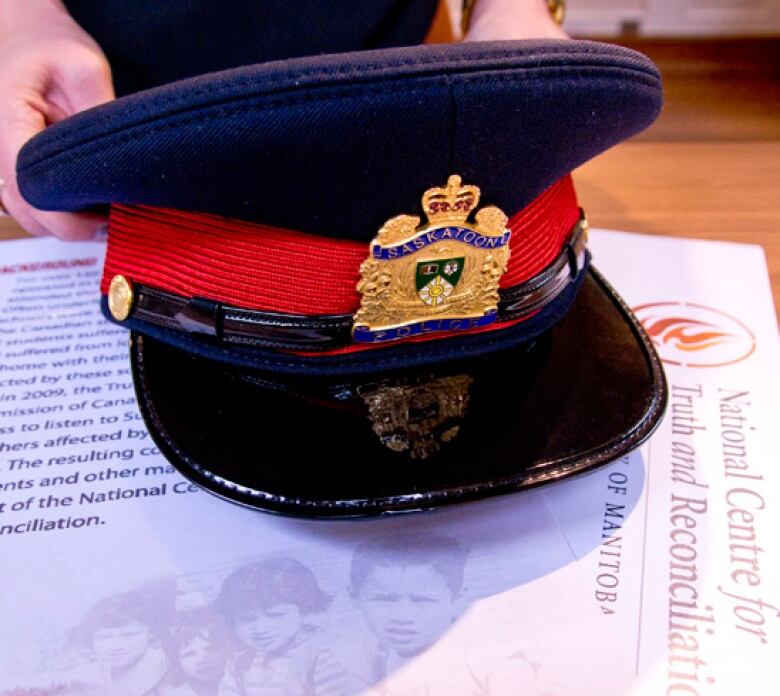Residential schools: Promises of reconciliation saved in bentwood box
Canadians offered hundreds of items to commission at events over 6 years

A broken brick from a demolished residential school. A hockey jersey. Star blankets. A leather-bound book of pledges. DVDs. A miniature birch bark canoe.
These are just a few of more than 1,300 items presented to the Truth and Reconciliation Commission into Indian Residential Schools (TRC) in the past six years.
The objects were all placed gently in the bentwood box carved specially to house them, representing commitments to work toward reconciliation between indigenous and non-indigenous peoples.
- Reconciliation not opportunity to 'get over it': Justice Murray Sinclair
- The legacy of Canada's residential schools
- More stories aboutTruth and Reconciliation
"What's actually in there are deep and sincere promises to make this country a better place and address past wrongs," says Ry Moran, director of the National Research Centre for Truth and Reconciliation.

These "Expressions of Reconciliation" usually represented by a physical object and an oral statement in front of an audience were made by everyone from residential school survivors to church representatives andgovernment officials.
"It was more than just words on paper or a handshake in front of cameras," says Moran. "The materials placed in there are a springboard to move this country to a brighter future for all peoples."
The bentwoodbox objects are being archived at the National Research Centre at theUniversity of Manitoba in Winnipeg.Moran is determined to make sure the items don't "end up on shelf collecting dust and withering," but travel the country to inspire other Canadians.
"We hope people will understand, 'Yes, there is something I can do: in myself or my organization, to meaningfullyaddress past harms and try to move this country to a better place.'"
Here are five things you'll find in the bentwoodbox:
1. Suitcase

"This represents the many suitcases packed by parents of the children, with ceremonial clothes, dried meats, beaded moccasins," says Moran. "Most of the suitcases were immediately removed when the child got through the front door."
Petiquay inscribed the suitcase with a poem he wrote and packed it with aboriginal medicinesbefore placing it in the Bentwood Box. The suitcase represents his commitment to healing, sobriety and caring for his family.
2. Ballet slippers

"What was important for me was this whole production would be a process between aboriginal and non-aboriginal people," says Andre Lewis, artistic director of the Royal Winnipeg Ballet. "I always felt reconciliation shouldn't be just about indigenous people, or just about non-indigenous people, but us working together."
Anishinaabe author Joseph Boyden wrote the ballet and the Winnipeg production featured an indigenous installation artist and indigenous singers. Going Home Star will go on national tour in 2016.
3.Blue Rodeo song lyrics

Greg Keelor wrote the song in 1990to decry the Canadian government's neglect of First Nations. "What you preach for others/Why don't you practise that first-hand?" Keelor asks in one verse.He feels the song could apply to the government's relationship with the TRC today.
"The government pays [the TRC]lipservice, but then they do all these things that seem to be against it," says Keelor. "That's the dance native people and our government have been doing since Day 1. Every treaty is broken. It's just such a horrible thing."
4. Broken chalice

"The concept of brokenness is a useful starting place," says Moranof the chalice. "If, in fact, the relationship is this broken, it will take a long time to repair all the pieces."
In another a gesture of reconciliation, United Church councils in British Columbia hired a "mobile counsellor" a full-time person to provide psychotherapeutic services for survivors and their families who met with more than 300 families over three years.
As an aside, Moran adds an amusing story about finding the broken chalicewhile unpacking the box at the end of the Atlantic event.
He thought it had shattered in transit. "Oh my god, I'm dead," he thoughtand was frantic to find the broken pieces until someone explained it was meant to be that way.
5. Saskatoon police hat

The Stonechild Inquiry in 2004 hadlambasted police for the common practice of "starlight tours,"where police would drop off perceived troublemakers onthe outskirts of town on deathly coldwinter nights,leaving themto make their way back home on their own. Some, like Neil Stonechild, froze to death.
"Saskatoon went through a rough time at the beginning of the centurywith a few inquiries," says Chief Clive Weighill. "I thought it was important for us to come forward to say we've worked very hard with the aboriginal community and list some of what we accomplished."
Key changes include hiring more aboriginal membersand compulsory diversity training. Weighill also highlighted annual meetings he now holds with aboriginal elders, which led to him participating in his first sweat lodge. "It really is a very moving spiritual event."
Weighill also committed at the TRC to creatinga memorial to missing and murdered indigenous women. That's expected to be finished this autumnand erected in front of police headquarters in Saskatoon.












_(720p).jpg)


 OFFICIAL HD MUSIC VIDEO.jpg)
.jpg)



























































































